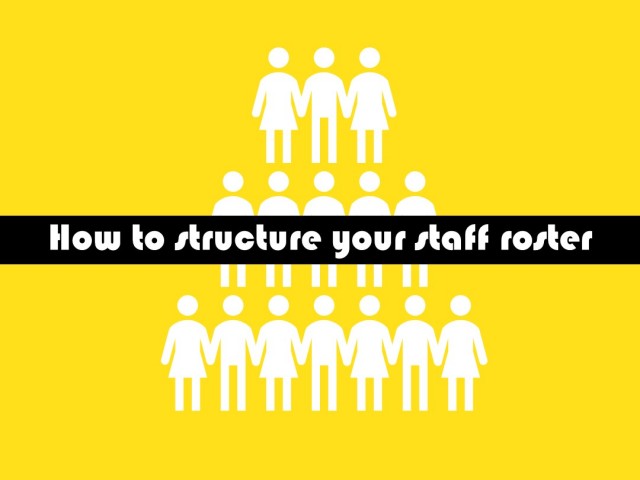How to structure your staff roster
Sep 20, 2020, 5:53 AM
In a previous post, we looked at how to set your wage budget, and how to manage employee rostering and costings for free (see HERE). In this post, we look at some issues associated with optimising the structure of your staff roster to fit within your wage budget.
1. Should I have more employees on shorter hours?
One thought might be to employ more employees on shorter hours to reduce PAYG tax and superannuation obligations. The superannuation earnings threshold is $450 per employee per month, so you would need a lot of employees to avoid this.
A worked example (see below) shows that you will not be financially better off by employing more employees on shorter hours with hourly wage rates and total hours held constant (note: workers compensation insurance premiums are likely to be higher with more employees).
Reducing total wages payable ultimately boils down to reducing the average hourly wage rate and/or total hours worked (see below).
|
WEEKLY EARNINGS |
||||||||||||||||
|
No. of employees |
Hourly rate |
Weekly hours per employee |
Earnings per employee |
Total hours |
Total earnings |
|||||||||||
|
Roster 1 |
3 |
$ 26 |
40 |
$ 1,040 |
120 |
$ 3,120 |
||||||||||
|
Roster 2 |
6 |
$ 26 |
20 |
$ 520 |
120 |
$ 3,120 |
||||||||||
|
Roster 3 |
10 |
$ 26 |
12 |
$ 312 |
120 |
$ 3,120 |
||||||||||
|
WEEKLY TOTALS |
||||||||||||||||
|
No. of employees |
Earnings per employee |
Tax per employee |
Super per employee |
Total net pay |
Total gross pay |
|||||||||||
|
Roster 1 |
3 |
$ 1,040 |
$ 197 |
$ 99 |
$ 2,529 |
$ 3,120 |
||||||||||
|
Roster 2 |
6 |
$ 520 |
$ 41 |
$ 49 |
$ 2,874 |
$ 3,120 |
||||||||||
|
Roster 3 |
10 |
$ 312 |
$ - |
$ 30 |
$ 3,120 |
$ 3,120 |
||||||||||
Of course, there are the usual pros and cons to having too many or too few staff. For example, the time and cost of managing many staff on short hours or issues with staff being sick/absent with few staff on long hours.
While you will eventually discover the right mix for your business, it is important that you do not become reliant on any one particular staff member. Employees should be able to transition in and out of job positions with the least disruption to the operation of the business. This can be achieved by developing good systems and procedures along with good training and clear instructions.
2. How can I minimise hours per week?
Minimising hours per week offered to employees requires the owner(s) to contribute more to day-to-day operations. Typically, the most underutilized employee in an overstaffed company is you (the owner). Working in the business will minimise staff costs but also allows you to keep a close eye on the daily operation of the business to help identify and resolve issues, and look for areas for improvement.
Being more hands-on with your business, along with good sales data, will also help identify busy/slow times of the day and week when more/less staff are required. This information enables you to adjust your roster to reduce the periods when employees are not adding value.
Also, look at your operating hours. Can you shorten your opening hours? For retail businesses, look at an hourly break down in your sales to see if your sales are justifying your wages. Do you need to open Saturdays/Sundays? Can you set seasonal trading hours?
3. How can I minimise average hourly rates?
Minimising average hourly rates requires a good mix of adult and junior staff. Certain businesses will find this easier than others. For example, restaurants can assign more hours to juniors. Don’t underestimate the value of junior staff; if trained well and given clear direction, they can offer immense value to any business.
The takeaway
The most important issue with structuring your staff roster is to ensure that your wage costs are always below your wage budget. Optimising the structure of your roster boils down to understanding when staff are needed, how long they are required, and striking a good mix of adult and junior staff.

